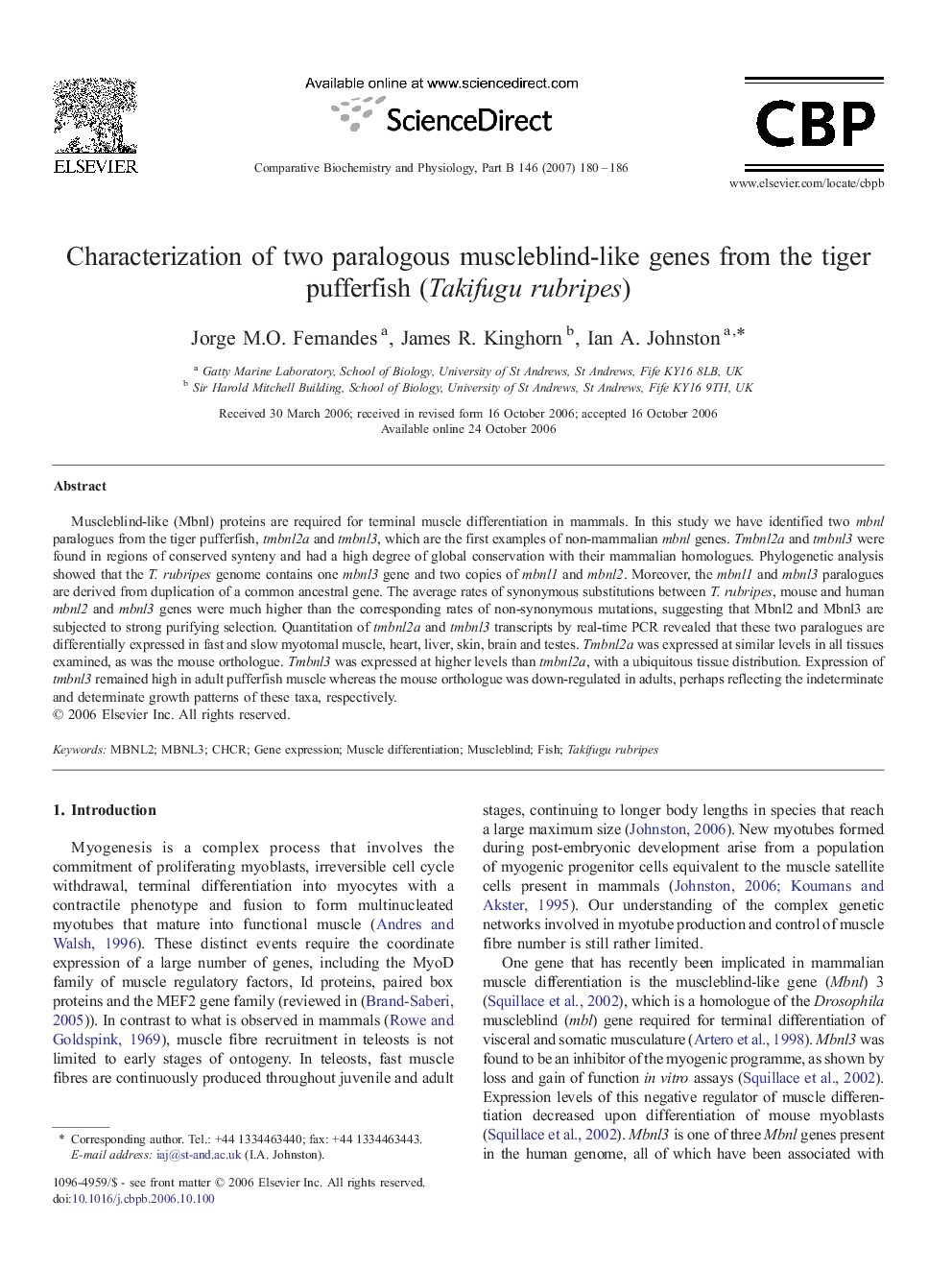| Article ID | Journal | Published Year | Pages | File Type |
|---|---|---|---|---|
| 1976634 | Comparative Biochemistry and Physiology Part B: Biochemistry and Molecular Biology | 2007 | 7 Pages |
Muscleblind-like (Mbnl) proteins are required for terminal muscle differentiation in mammals. In this study we have identified two mbnl paralogues from the tiger pufferfish, tmbnl2a and tmbnl3, which are the first examples of non-mammalian mbnl genes. Tmbnl2a and tmbnl3 were found in regions of conserved synteny and had a high degree of global conservation with their mammalian homologues. Phylogenetic analysis showed that the T. rubripes genome contains one mbnl3 gene and two copies of mbnl1 and mbnl2. Moreover, the mbnl1 and mbnl3 paralogues are derived from duplication of a common ancestral gene. The average rates of synonymous substitutions between T. rubripes, mouse and human mbnl2 and mbnl3 genes were much higher than the corresponding rates of non-synonymous mutations, suggesting that Mbnl2 and Mbnl3 are subjected to strong purifying selection. Quantitation of tmbnl2a and tmbnl3 transcripts by real-time PCR revealed that these two paralogues are differentially expressed in fast and slow myotomal muscle, heart, liver, skin, brain and testes. Tmbnl2a was expressed at similar levels in all tissues examined, as was the mouse orthologue. Tmbnl3 was expressed at higher levels than tmbnl2a, with a ubiquitous tissue distribution. Expression of tmbnl3 remained high in adult pufferfish muscle whereas the mouse orthologue was down-regulated in adults, perhaps reflecting the indeterminate and determinate growth patterns of these taxa, respectively.
